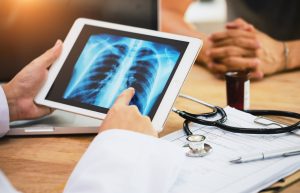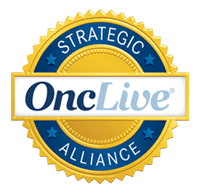Dr. Joseph McLaughlin
If you’ve never smoked or used tobacco, could you still be susceptible to lung cancer? The short answer is yes. According to the ACS, up to 20% of patients who die from lung cancer are non-smokers. Oncology specialist, Dr. Joseph McLaughlin – from the Regional Cancer Care Associates (RCCA) Manchester, Connecticut location – says that up to approximately 30,000 cases of lung cancer that arise each year are not attributed to smoking or tobacco use.
Common Types Of Lung Cancer
As one of the leading causes of cancer-related deaths in the United States, lung cancer is frequently classified as either small-cell lung cancer (SCLC), which is most often found in smokers, or non-small-cell lung cancer (NSCLC), which affects smokers and non-smokers alike. Some severe cases of SCLC can lead to conditions that are atypical among non-smoking patients.
Lung Cancer Symptoms
While individual lung cancer types may differ between patients, the symptoms are often similar in nature. Common symptoms include fatigue, weight loss, persistent cough, shortness of breath and frequent pulmonary infections, among others if the cancer has spread. “Patients with SCLC tend to develop large lymph nodes, or masses, in the center of their chest, which can adversely affect the blood vessels and airways and can lead to more serious complications,” says Dr. McLaughlin.
Lung Cancer Risk Factors In Non-Smokers
Prolonged exposure to high levels of environmental carcinogens is the leading cause of cancer in most non-smokers. Two of the most common culprits are asbestos and radon, which can damage the lining in the lungs over time and potentially lead to lung cancer.
Dr. McLaughlin also says a person’s genetics can play a role in cancer development, as well as alcohol abuse: “Though it’s not a strong risk factor, heavier alcohol use can increase the risk of lung cancer.” He goes on to explain that while an individual may not actively smoke themselves, inhaling secondhand smoke from others nearby can increase their likelihood of developing lung cancer.
Many risk factors associated with non-smoking lung cancer are still being discovered. Dr. McLaughlin notes that some cases still have unknown causes, which makes it more difficult to minimize risk.
Lung Cancer Treatment Options In Smokers Vs. Non-Smokers
Lung cancer is commonly treated with chemotherapy, which is administered orally or intravenously. While chemo is often the most effective form of treatment for lung cancer in smokers and non-smokers, newer options are available. For example, some patients with Stage I or Stage II lung cancer may benefit from targeted therapy and immunotherapy used instead of, or in conjunction with, chemotherapy. Also, patients with more than 50% PD-L1 expression on their tumors are candidates for newer immunotherapy agents directed at PD-L1. In these instances, immunotherapy outperforms chemotherapy for advanced NSCLC.
Dr. McLaughlin explains, “We have targeted therapies that are directed specifically to certain mutations. The mutations are more common in non-smokers than smokers. A non-smoker would have a higher chance of having one of these specific mutations, so you would start with the therapy directed at that mutation rather than chemotherapy.”
The Importance Of Early Lung Cancer Detection
Dr. McLaughin notes, “Significant innovations have been made, but there are still many more needed.” Researchers are striving to develop new lung cancer treatments every day, which leaves Dr. McLaughlin hopeful for patents in the future. He also hopes to be able to diagnose patients even earlier by performing regular screenings for at-risk patients: “The main issue with lung cancer is that the majority of diagnoses are Stage IV at diagnosis, which we generally think of as not curable. Screening for lung cancer is something that we’re hoping becomes more accepted in standard practice. I think that would help in terms of earlier detection, leading to higher cure rates.”









